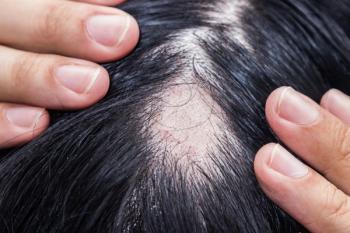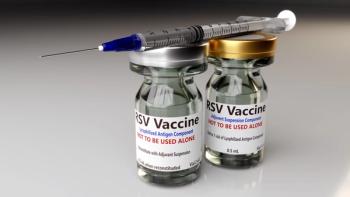
Passive Smoke Exposure in Prepubescent Males Affects Lung Function in Children, Grandchildren
Key Takeaways
- Paternal prepubertal passive smoke exposure is linked to impaired lung function trajectories in offspring, persisting into adulthood.
- Associations were found with below-average FEV1 and early low-rapid decline FEV1/FVC trajectories in offspring.
Paternal prepubertal passive smoke exposure is linked to impaired lung function trajectories in offspring, persisting into adulthood.
This article was originally published on
Paternal prepubertal passive
“Recently, there has been increasing interest in intergenerational transmission of exposure to risk factors," Jiacheng Liu, PhD candidate at the Allergy and Lung Health Unit, Centre for Epidemiology and Biostatistics, Melbourne School of Population and Global Health, The University of Melbourne, Victoria, Australia, and colleagues wrote.1 "Some emerging evidence has suggested maternal passive smoke exposure during their own intrauterine life as a risk factor for childhood asthma in their offspring. Active paternal smoking before age 15 years (prepuberty) increased the risk of childhood asthma and early lung function deficits in their offspring. The association between active paternal prepubertal smoking and asthma even persisted into adulthood in their offspring.”
The preliminary analysis extended from active smoking to passive smoke exposure during paternal prepuberty and identified an association between this paternal smoke exposure and childhood asthma in their offspring.2 Therefore, the authors hypothesized that the intergenerational association of passive smoke exposure before paternal completion of puberty may persist well into adulthood for offspring.
Liu and colleagues analyzed data from 890 father-offspring pairs from the Tasmanian Longitudinal Health Study. The offspring were probands in the original cohort in TAHS who underwent spirometry at 6 time points from ages 7 to 53 years. Lung function trajectories, including forced expiratory volume in 1 second (FEV1), forced vital capacity (FVC), and FEV1/FVC, were previously derived using group-based trajectory modeling. Fathers reported their own passive smoke exposure prior to age 15. The investigators used multinomial logistic regressions to assess associations between paternal prepubertal passive smoke exposure and lung function trajectories in offspring. They also assessed active paternal smoking, offspring passive smoke exposure and respiratory illnesses during childhood, and subsequent active smoking as potential mediations and interactions.
Liu and colleagues found that paternal prepubertal passive smoke exposure was associated with below-average FEV1 (adjusted multinomial OR [aMOR], 1.56; 95% CI, 1.05-2.31) and early low-rapid decline FEV1/FVC trajectories (aMOR, 2.30; 95% CI, 1.07-4.94) in offspring. Furthermore, offspring exposed to childhood passive smoke had an augmented association with below-average FEV1 trajectory (aMOR, 2.36; 95% CI, 1.34-4.13; P = .003).1
For the link between paternal prepubertal passive smoke exposure and offspring below-average FEV1 trajectory, active paternal smoking, active offspring smoking, and childhood passive smoke exposure contributed 13.7% (95% CI, 7.7%–59.5%), 13.4% (95% CI, 7.6%–52.4%), and 10.9% (95% CI, 6.0%–47.4%), respectively. Other mediators of offspring asthma/wheeze, bronchitis, and pneumonia/pleurisy showed a limited effect, with each contributing ≤2.0%, while preterm birth, low birth weight, and childhood food allergy showed no mediation. Overall, all mediators explained 14.1% of the total effect.1
For the association with early low–rapid decline FEV1/FVC trajectory, offspring asthma/wheeze accounted for 14.8% (95% CI, 7.6%–73.7%), with childhood passive smoke exposure and active paternal smoking contributing 12.4% (95% CI, 6.4%–57.7%) and 11.3% (95% CI, 6.0%–53.5%), respectively. Other mediators contributed less than 7%. Collectively, all mediators explained 10.1% of the total effect.1
“In conclusion, this study revealed that paternal prepubertal passive smoke exposure was associated with impaired pre-COPD lung function trajectories across the first 6 decades of their offspring’s lives, including the below average FEV1 and early low-rapid decline FEV1/FVC trajectories. These findings suggest that smoking may adversely affect lung function not only in smokers but also in their children and grandchildren. The association of such paternal exposure was augmented when offspring were also exposed to passive smoke during childhood, highlighting an opportunity for intervention. Fathers exposed to tobacco smoke during prepuberty may still reduce risk for future generations by avoiding smoking around their children. The weaker associations observed for other impaired lung function trajectories should be interpreted with caution,” Liu and colleagues said.2
References
- Liu J, Perret JL, Lodge CJ, et al. Paternal prepubertal passive smoke exposure is related to impaired lung function trajectories from childhood to middle age in their offspring. Thorax Published online September 2, 2025. doi: 10.1136/thorax-2024-222482.
- Liu J, Bowatte G, Pham J, et al. Pre-pubertal smoke exposure of fathers and increased risk of offspring asthma: a possible transgenerational effect. Eur Respir J. 2022;60: 2200257. doi:10.1183/13993003.00257-2022
Newsletter
Stay ahead of policy, cost, and value—subscribe to AJMC for expert insights at the intersection of clinical care and health economics.







































